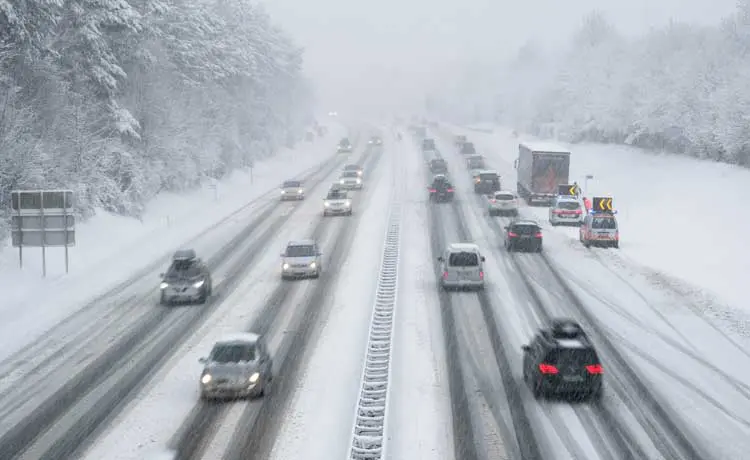Winter driving can be challenging, even for the most experienced drivers. Follow these tips for driving safely in rain, fog, snow and on icy roads. By doing so, you can keep yourself and your family safe, no matter what the winter weather brings.
Safe Winter Driving Tips
Safe driving begins before you even get on the road. Before leaving your home, know the latest weather forecasts and road conditions, and plan your route accordingly. If bad weather is expected, drive only if absolutely necessary. You can check the National Weather Service’s winter weather forecasts or tune in to an NOAA Weather Radio to find out what’s headed your way.
A Rainy Winter Drive
- Turn on your headlights and use your ventilation system to maintain maximum visibility.
- Slow down and allow yourself extra distance between your vehicle and the vehicle ahead.
- Be aware of wet leaves, papers or any other debris that may be on the road.
- Try to drive in the tire tracks made by the vehicle ahead of you (without tailgating). These tracks have less water, so driving in them reduces the risk of hydroplaning (when tires lose contact with the road).
- Avoid large puddles of water. Driving through them may alter the performance of your ignition and brakes.
A Foggy Winter Drive
- Slow down gradually when you drive into a patch of fog.
- Do not stop suddenly, as the drivers behind you may not see you in time to stop.
- Turn on your headlights (low beams) and use your ventilation system to maintain maximum visibility.
- Follow the right edge of the road for guidance.
- In dense fog, turn on your hazard warning lights. Slow down to make it easy for other drivers to pass.
Snow and Icy Roads
- Always keep your gas tank full to keep the fuel line from freezing.
- Store an emergency supply kit in your vehicle. Items may include jumper cables, blankets and cat litter for better tire traction. For more information on building an emergency supply kit, visit: Ready.gov
- Remember: If you can't see, you can't drive. Remove the snow and ice from the windshield, side and rear windows, mirrors, headlights and taillights.
- Whether you're driving on snow or ice, maintain extra distance between your vehicle and the vehicle ahead of you.
- When you brake, do so without locking the wheels. If you lock your wheels, you will begin sliding and you will not be able to control the vehicle.
- Be aware that the surface of bridges and overpasses freeze first and thaw last.
If you start sliding, turn the steering wheel in the direction you want the front of the vehicle to go. Do not oversteer. Take your foot off the accelerator. Do not brake until you regain control of the vehicle.
For more information on our Security & Preparedness products, browse the QuickSeries® library of guides, including A First Responder's Guide to Traffic Incident Management, Disaster Preparedness and Smart Driving for Service Members. Do you need a customized outreach product? Reach out to an Account Manager today!
